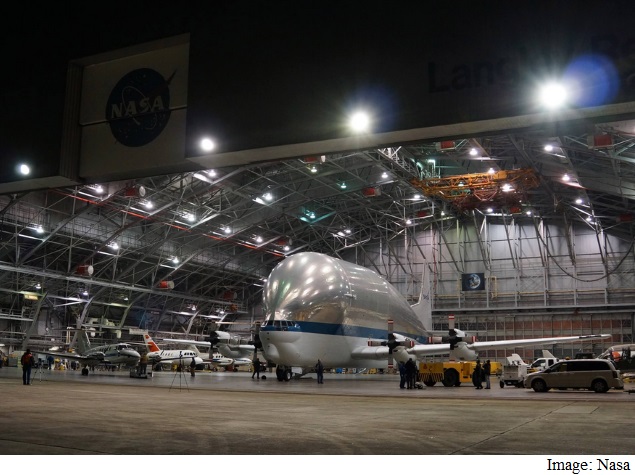Nasa's New ASTAR Software to Enhance Flight Efficiency

Known as Airborne Spacing for Terminal Arrival Routes (ASTAR), the software is designed to give pilots specific speed information and guidance so that planes can be more precisely spaced, enabling pilots to fly a "follow the leader" approach to their destination airport, the US space agency said in a statement.
This type of approach would minimise flight path deviations, allow more efficient use of existing airspace and possibly reduce noise over communities surrounding airports - all of which could lead to reductions in commercial flight delays.
The software is being tested on the Boeing ecoDemonstrator 787 Test Airplane as part of the Boeing Company's ecoDemonstrator programme.
"ASTAR represents the first of several inventive technologies Nasa's aeronautical innovators are working on that will be tested with the help of the ecoDemonstrator test airplanes," said Jaiwon Shin, associate administrator for Nasa's aeronautics research mission directorate at the agency's headquarters in Washington, DC.
The Nasa team will apply the lessons learned from the flight test programme to improve the software and then begin development of actual flight hardware for further testing and eventual certification for use.
The ASTAR experiment is the first of several Nasa tests flying aboard the ecoDemonstrator Test Airplanes.
During the spring and summer of 2015, the ecoDemonstrator 757 Test Airplane will host two Nasa experiments.
The first involves using active flow control technologies on the aircraft's tail to determine if future tail designs can be altered to reduce drag.
The second will test the effectiveness of coatings applied to the leading edge of a wing section to reduce turbulence-inducing buildup of insect residue.
Get your daily dose of tech news, reviews, and insights, in under 80 characters on Gadgets 360 Turbo. Connect with fellow tech lovers on our Forum. Follow us on X, Facebook, WhatsApp, Threads and Google News for instant updates. Catch all the action on our YouTube channel.
Related Stories
- Samsung Galaxy Unpacked 2025
- ChatGPT
- Redmi Note 14 Pro+
- iPhone 16
- Apple Vision Pro
- Oneplus 12
- OnePlus Nord CE 3 Lite 5G
- iPhone 13
- Xiaomi 14 Pro
- Oppo Find N3
- Tecno Spark Go (2023)
- Realme V30
- Best Phones Under 25000
- Samsung Galaxy S24 Series
- Cryptocurrency
- iQoo 12
- Samsung Galaxy S24 Ultra
- Giottus
- Samsung Galaxy Z Flip 5
- Apple 'Scary Fast'
- Housefull 5
- GoPro Hero 12 Black Review
- Invincible Season 2
- JioGlass
- HD Ready TV
- Laptop Under 50000
- Smartwatch Under 10000
- Latest Mobile Phones
- Compare Phones
- Huawei Nova 15
- Huawei Nova 15 Pro
- Huawei Nova 15 Ultra
- OnePlus 15R
- Realme Narzo 90x 5G
- Realme Narzo 90 5G
- Vivo S50 Pro Mini
- Vivo S50
- Asus ProArt P16
- MacBook Pro 14-inch (M5, 2025)
- Huawei MatePad 11.5 (2026)
- OnePlus Pad Go 2 (5G)
- Huawei Watch 10th Anniversary Edition
- OnePlus Watch Lite
- Acerpure Nitro Z Series 100-inch QLED TV
- Samsung 43 Inch LED Ultra HD (4K) Smart TV (UA43UE81AFULXL)
- Asus ROG Ally
- Nintendo Switch Lite
- Haier 1.6 Ton 5 Star Inverter Split AC (HSU19G-MZAID5BN-INV)
- Haier 1.6 Ton 5 Star Inverter Split AC (HSU19G-MZAIM5BN-INV)
-
 Red Magic 11 Air Launch Confirmed; Tipster Hints at Presence of Snapdragon 8 Elite Chip
Red Magic 11 Air Launch Confirmed; Tipster Hints at Presence of Snapdragon 8 Elite Chip
-
 Samsung Reportedly Plans to Expand India Manufacturing With Focus on Phone Displays, May Source Chips From India
Samsung Reportedly Plans to Expand India Manufacturing With Focus on Phone Displays, May Source Chips From India
-
 Realme 16 Pro+ 5G Price in India Leaked as Tipster Reveals Retail Box Ahead of Launch on January 6
Realme 16 Pro+ 5G Price in India Leaked as Tipster Reveals Retail Box Ahead of Launch on January 6
-
 OnePlus Nord 6 Visits SIRIM Certification Website, Could Launch Soon: Expected Features, Specifications
OnePlus Nord 6 Visits SIRIM Certification Website, Could Launch Soon: Expected Features, Specifications











